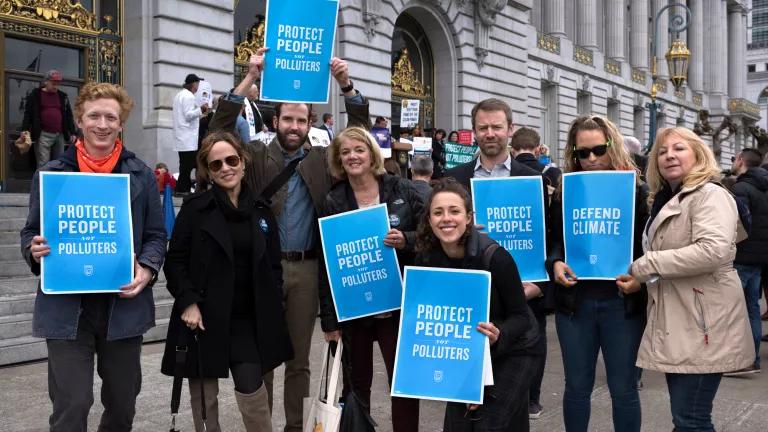The California Public Utilities Commission voted unanimously today to approve a plan to distribute cap-and-trade allowance revenues from the utility sector that includes a first-of-its-kind “climate dividend.” Under today’s decision, every California household that draws power from one of the state’s three large investor-owned electric utilities (PG&E, Southern California Edison, and SDG&E) will receive a dividend in the form of a semi-annual credit on their energy bill starting next year.
The vote approves in large part the proposed decision issued by Administrative Law Judges Semcer and Hecht last month, which first detailed the components of the plan. As I blogged at the time, the decision allocates allowance revenues to three main customer groups, consistent with the Legislature’s direction in SB 1018:
- Leakage-Exposed Industries: First, customers in industries that the Air Resources Board has classified as leakage-exposed (i.e., that face competition from out-of-state firms not held accountable for their carbon pollution) will receive compensation for the indirect emissions associated with their electricity purchases. Although the details will be worked out in a follow up proceeding, the decision rejects proposals that would compensate leakage-exposed customers with allowance revenues in direct proportion to their consumption (a so-called volumetric return). The Commission estimates leakage-exposed industries will receive roughly 5% of the total revenue.
- Small Businesses: Revenues will next be returned to small businesses, which the Commission defines as any non-residential customer with demand not in excess of 20 kW in more than three months (within the previous twelve-month period). Customers that classify as both leakage-exposed and a small business are not eligible for multiple rebates. The Commission estimates small-businesses will receive roughly 10% of the total revenue.
- Households: The bulk of allowance revenues under today’s decision, roughly 85% of the total, will be provided to households. The Commission will pursue a two-tiered approach for residential customers. Allowance revenues will first be used to fully offset any direct costs, in rates, on households from the cap-and-trade program. In light of existing statutory constraints on apportioning costs within the residential class, the decision finds the allocation to upper-tier customers warrants a deviation from its “primary policy objective of preserving the carbon price signal.” The decision is clear, however, that should those restrictions be reduced or eliminated, so should the provision of allowance revenue in rates.
All remaining revenues will then be provided equally to all residential accounts through a climate dividend. Dividends can offset the indirect impacts from carbon pricing in the general economy, which will fall disproportionately on low income households, and create a more effective opportunity to engage customers both on the steps California is taking to confront climate change and the crediting of allowance revenues.
In that regard, the Commission must remain mindful of the extent to which dividends are proving successful in raising customer awareness. While providing credits ‘on-bill’ offers obvious administrative advantages, as the decision finds, key education and outreach opportunities will be lost if the manner in which dividends are provided leaves customers largely in the dark.
The final decision also affirms the Commission’s stance in favor of providing a clear price on carbon. The cap-and-trade program creates an economic incentive for businesses and consumers alike to find the most efficient and cost-effective means of reducing emissions. In the electricity sector, that incentive exists both for generators at the wholesale level and customers at the retail level to shift away from emissions intensive activities and invest in carbon reducing strategies like energy efficiency. In order to preserve those incentives, the cost of carbon should be reflected in the price of electricity.
While important implementation details remain to be resolved, the upshot from today is clear: California is taking steps to reduce carbon pollution, and households are reaping the benefits. That is a welcome early Christmas gift for all Californians.



